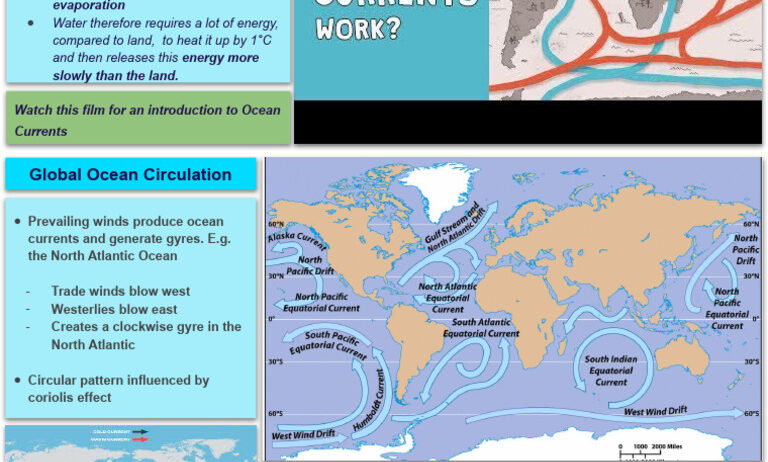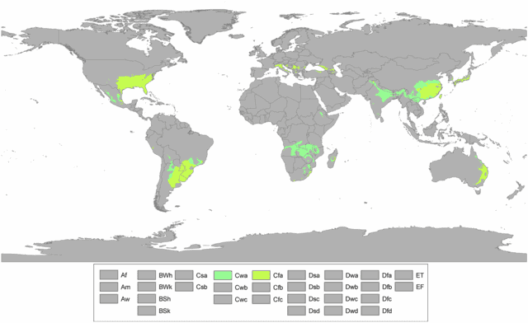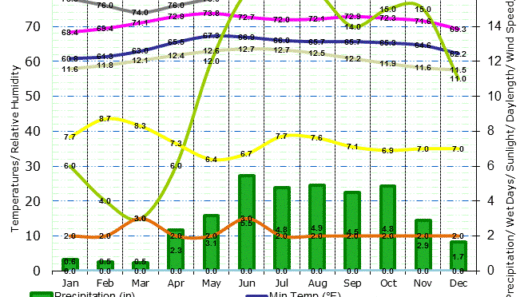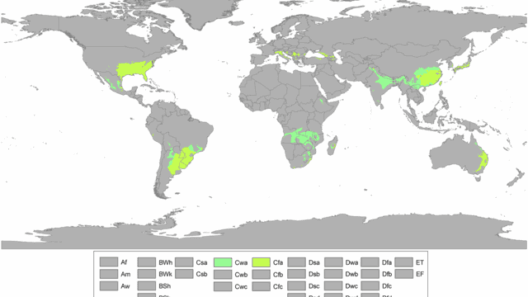The climate is a complex symphony, composed of myriad instruments, each playing its part to create the grand tapestry of weather and atmospheric conditions we experience on Earth. Understanding what determines climate requires delving into various elements such as latitude, altitude, ocean currents, and the interplay of land and sea. Each of these factors contributes unique notes to the overarching melody of climate, creating a profound impact on our planet’s ecosystems and the human experience.
At the heart of this climatic symphony lies latitude, the invisible lines that elegantly encircle the Earth from pole to pole. Latitude serves as a primary architect of climate, dictating the intensity and angle of sunlight received by different regions. The equator, located at 0° latitude, is a veritable oasis of solar energy, basking in direct sunlight year-round. In contrast, the polar regions, perched at 90° latitude, receive sunlight at a slant, resulting in diminished warmth and extended periods of darkness during winter months. This stark contrast exemplifies how latitude shapes not just temperature but also ecosystems, agriculture, and even cultural practices across the globe.
However, one must not consider latitude in isolation. Altitude, the vertical dimension of our planet, plays a pivotal role as well. As one ascends into the sky, the atmosphere thins, and temperatures decline. This phenomenon creates distinct climatic zones even within a relatively short geographical distance. Mountain ranges, the grand sentinels of Earth, often project a powerful yet fragile influence on local climates. One can observe lush, verdant valleys just a few miles away from snow-capped peaks, thanks to the rain shadow effect, where moist air is deprived of precipitation on the leeward side of the mountains, fostering distinct biomes. The interplay of these two dimensions—latitude and altitude—demonstrates the intricate layering of climate systems.
Moving beyond terrestrial considerations, ocean currents emerge as dynamic circulatory systems that profoundly affect climate. The world’s oceans, covering over 70% of the Earth’s surface, serve as colossal heat reservoirs. Currents act as conveyor belts, redistributing thermal energy across vast distances. For instance, the Gulf Stream transports warm water from the tropics to the North Atlantic, tempering the climate of northwestern Europe. Without this oceanic warmth, cities like London could experience temperatures reminiscent of much colder latitudes. Thus, ocean currents bridge the gap between land and sea, influencing both marine and terrestrial climates.
The intricate dance of these currents, such as El Niño and La Niña, showcases another layer of complexity. These oscillations can induce dramatic shifts in weather patterns, affecting everything from monsoon seasons in Asia to hurricane activity in the Atlantic. El Niño can trigger warmer sea temperatures, leading to altered rainfall patterns and droughts, demonstrating how interconnected our climate systems really are. The fluctuations of ocean currents remind us that climate is not static; it is instead an ever-evolving narrative shaped by natural forces.
In addition to the aforementioned elements, the nature of Earth’s surface—its topography and vegetation—also plays a crucial role in determining climate patterns. Urban areas, with their concrete jungles, create “heat islands,” where temperatures soar compared to their rural counterparts. Forests, swamps, and grasslands contribute to localized climate systems, sequestering carbon and generating moisture through transpiration. This biological interplay exemplifies how life and climate are profoundly interconnected, each affecting the other in a continuous feedback loop.
Moreover, the Earth’s axial tilt, currently at an angle of 23.5 degrees, introduces seasonal variations, reinforcing the complexity of climate dynamics. This tilt results in the changing position of the sun throughout the year, giving rise to the four distinct seasons that many parts of the world experience. These cyclical transitions not only affect temperature but also encourage a vibrant tapestry of life, as flora and fauna adapt to seasonal changes, demonstrating resilience and endurance. Furthermore, as climate change disrupts these patterns, species face mounting challenges, prompting conversations about biodiversity and conservation.
Inextricably linked to all these factors is the concept of climate feedback loops, both positive and negative. These loops are mechanisms by which a change in a system causes further changes, often amplifying or dampening initial effects. For example, as polar ice melts due to rising global temperatures, the albedo effect diminishes. This reduced reflectivity means that more sunlight is absorbed by the Earth, leading to further warming—a classic illustration of a positive feedback loop. Such intricacies reflect that climate is not merely a consequence of isolated factors but a complex web of relationships that necessitates a holistic understanding.
Nevertheless, amidst this symphonic complexity, human influence cannot be overlooked. Anthropogenic factors, from greenhouse gas emissions to land-use changes, exert pressure on natural systems. As the delicate balance shifts, unprecedented climate patterns emerge, resulting in extreme weather events—droughts, floods, and hurricanes. The urgency to comprehend what determines climate is amplified, as the repercussions of climate change touch on every aspect of life on Earth.
Thus, the quest for understanding climate transcends mere scientific inquiry; it is an imperative that demands our commitment to advocacy and action. Climate is not an abstract concept confined to textbooks; it is the very essence of our existence, shaping landscapes, societies, and futures. By embracing the multifaceted nature of climate—recognizing its determinants and advocating for sustainable practices—individuals can contribute meaningfully to a healthier planet. In this intricate symphony, each note matters; every action resonates far beyond what is visible, uniting humanity in a common purpose for a sustainable and thriving world.








